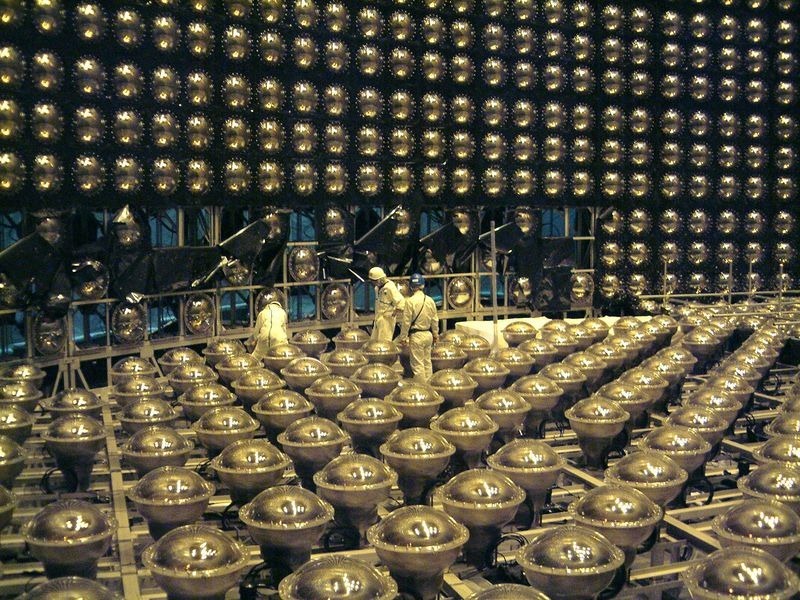Neutrino detectors therefore use entirely different kind of science and technology.
Other detectors have tanks filled with chlorine or gallium or other liquids.
Neutrino detectors are often built underground, to isolate the detector from cosmic rays and other background radiation.
It is one of the largest detector of its kind.
The Cherenkov light is projected as a ring on the wall of the detector and recorded by the PMTs.
Using this data scientists can determine the direction of the source and the flavor of the incoming neutrino.
The results of the LSND, however, were controversial and were refuted by later tests by other laboratories.
The detector sees one neutrino collision every 20 seconds, amounting to approximately 1 million neutrino events per year.
The detector is a 59-foot steel sphere filled with a liquid scintillator.
The SNO detector target consisted of 1,000 tons of heavy water contained in a 6-meter-radius acrylic vessel.
The heavy water was viewed by approximately 9,600 photomultiplier tubes.
The cavity housing the detector is reportedly the largest man-made underground cavity in the world.
IceCube Neutrino Observatory
The IceCube Neutrino Observatory is located at the Amundsen-Scott South Pole Station in Antarctica.
It consist of thousands of sensors distributed over a cubic kilometer of volume under the Antarctic ice.
The IceCube Neutrino Observatory is the largest neutrino telescope in the world.

Its purpose is to detect electron antineutrinos emitted by the 53 Japanese commercial nuclear reactors that surround the detector.
The experiment consists of eight antineutrino detectors, clustered in three locations within 1.9 km of six nuclear reactors.
Each detector consists of 20 tons of liquid scintillator surrounded by photomultiplier tubes and shielding.
This is filled with clear liquid scintillator.
Photo credit: Roy Kaltschmidt, LBNL

















